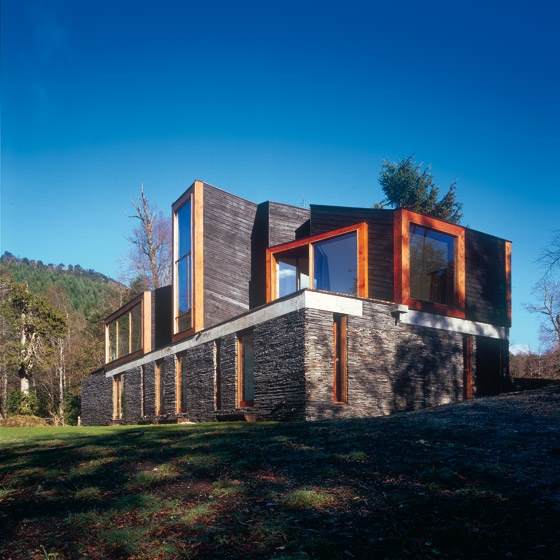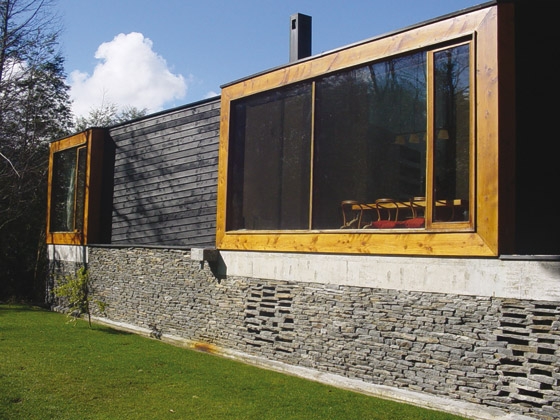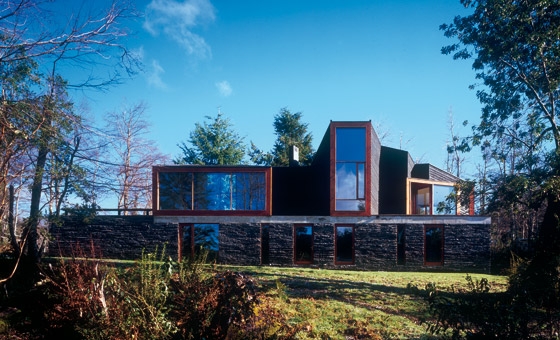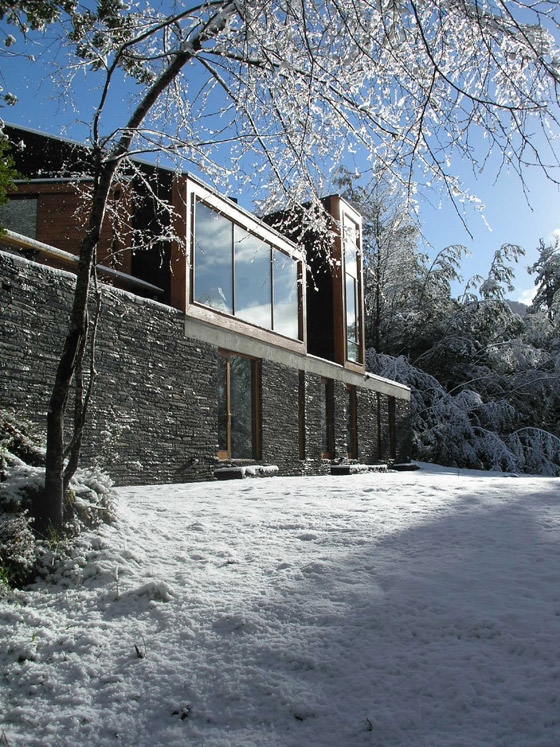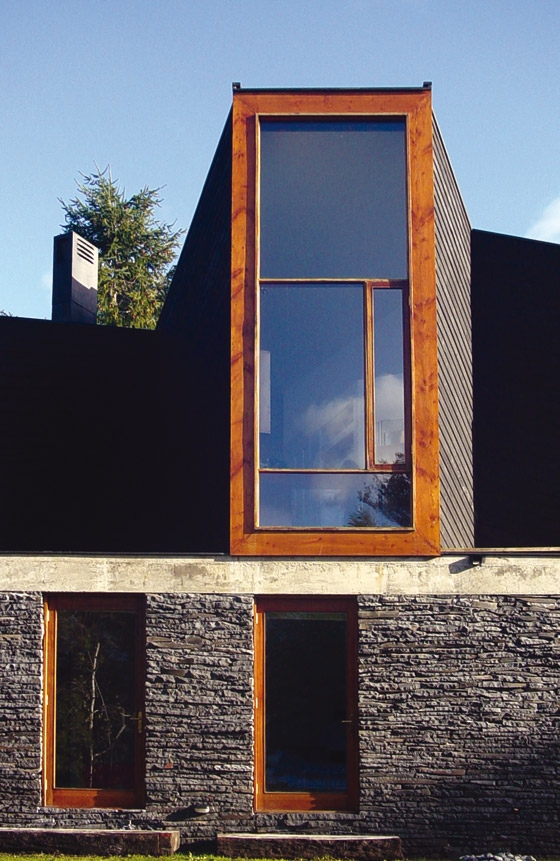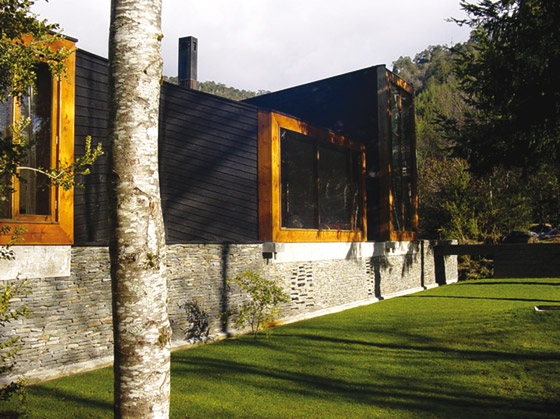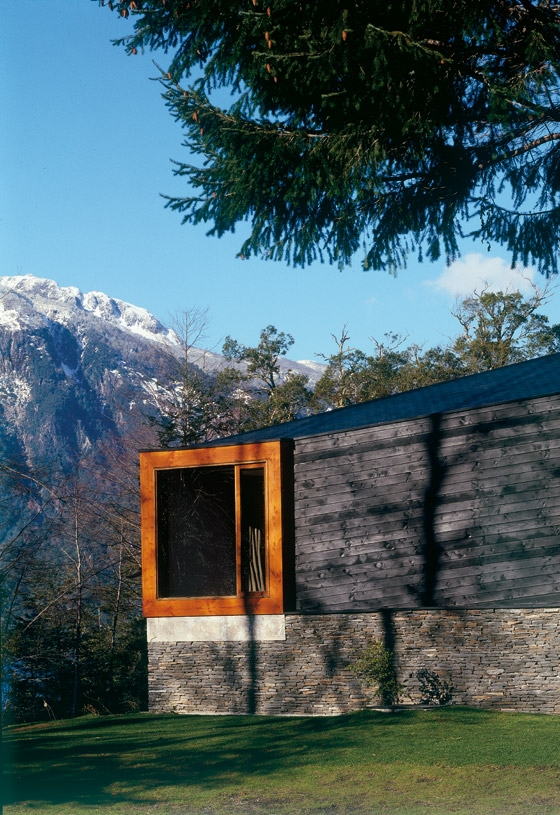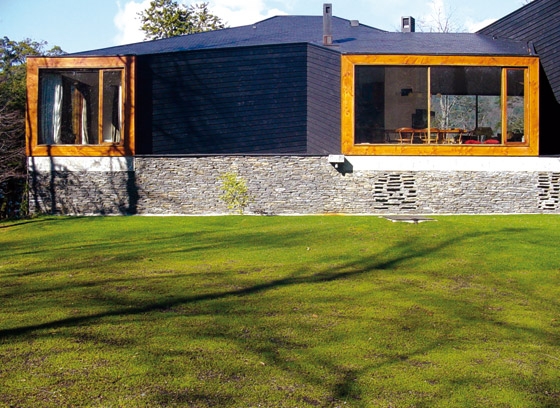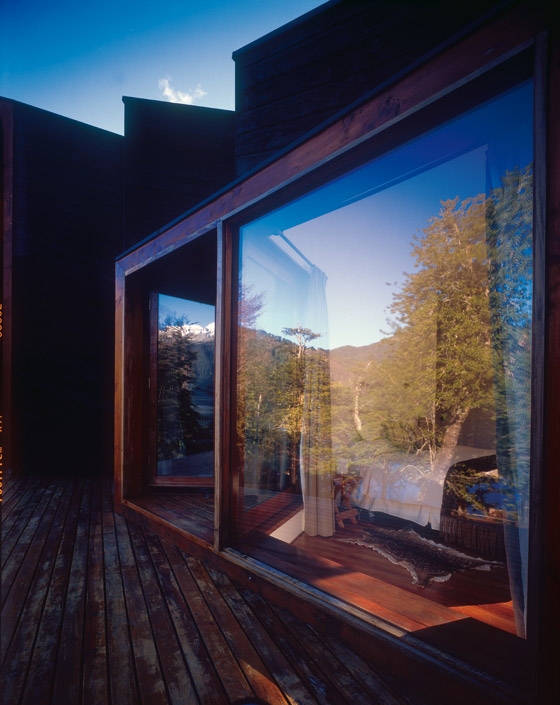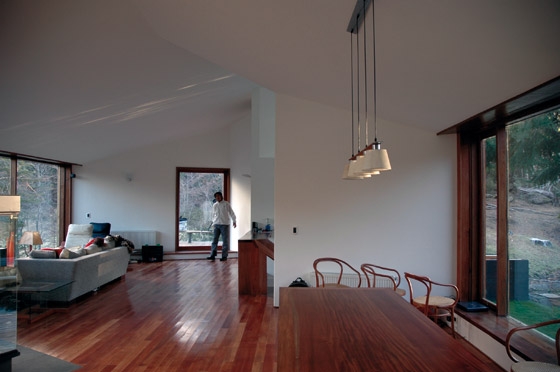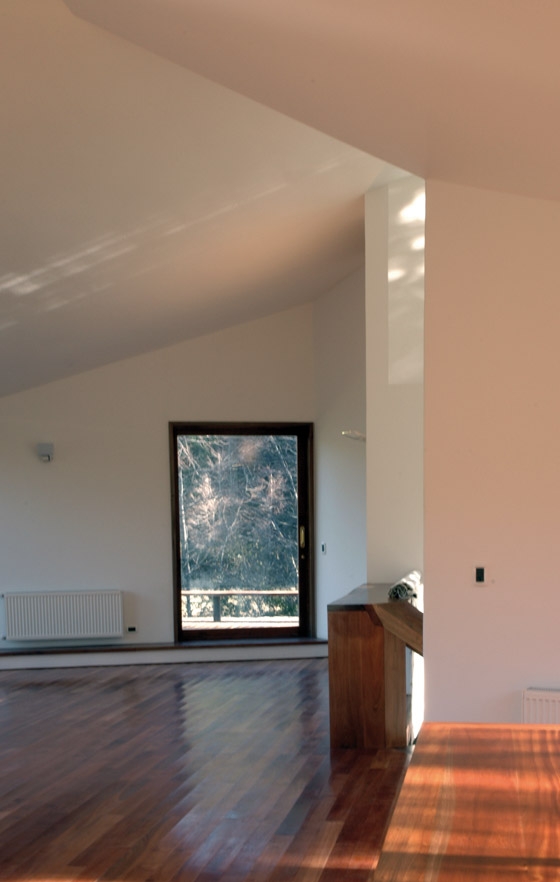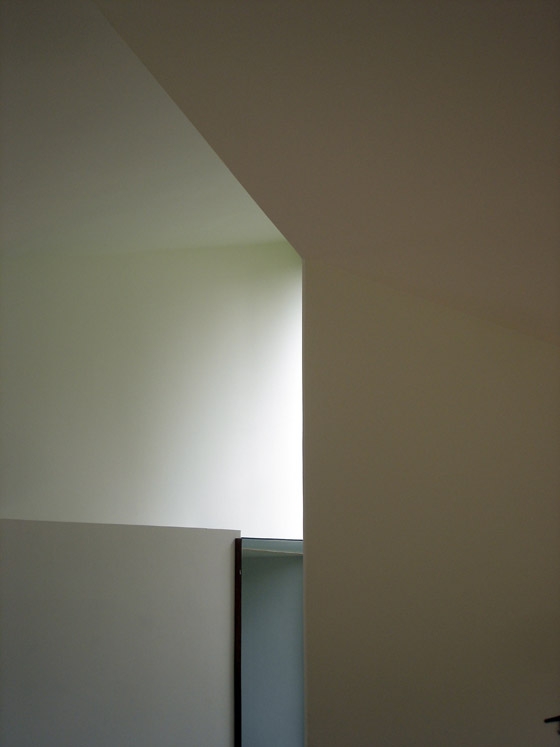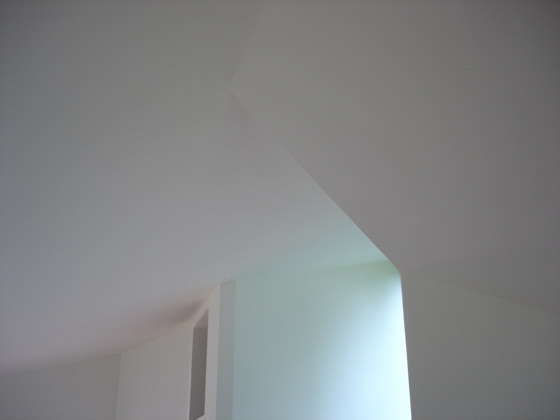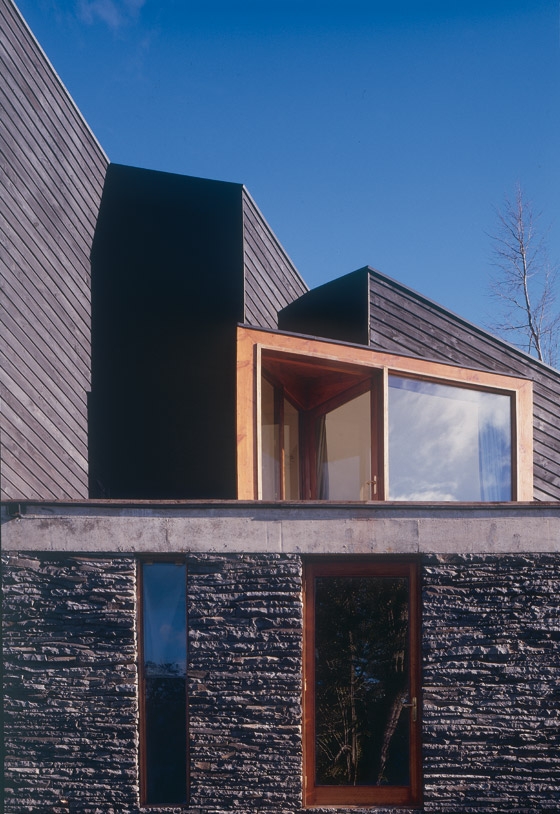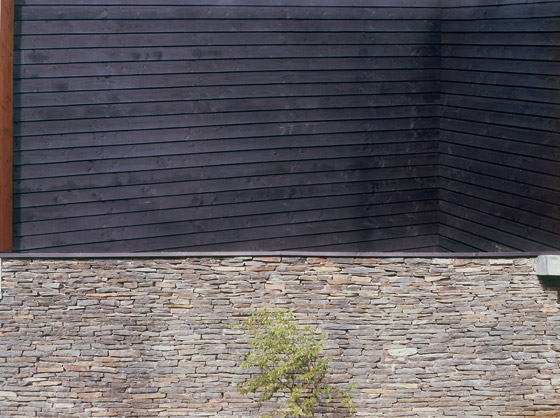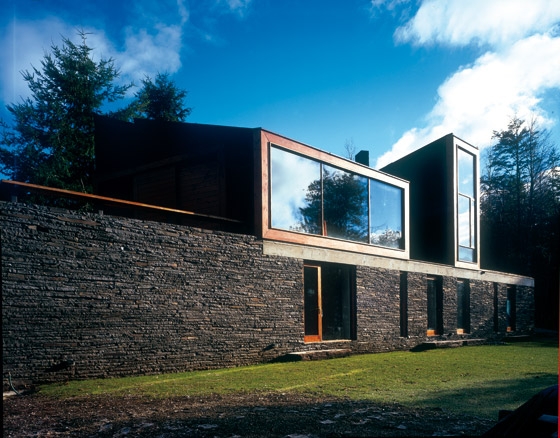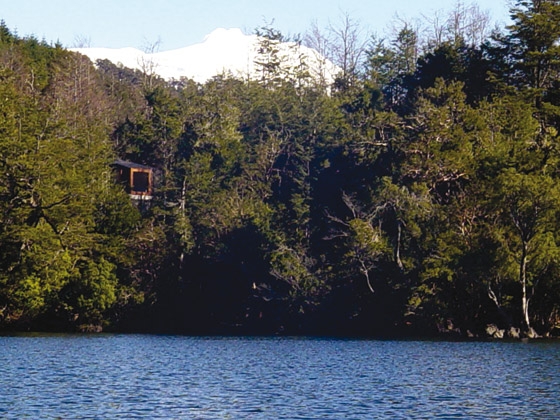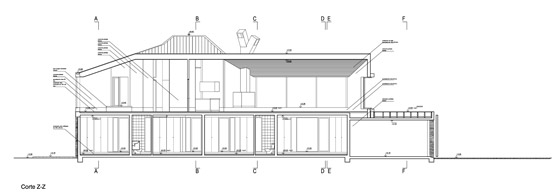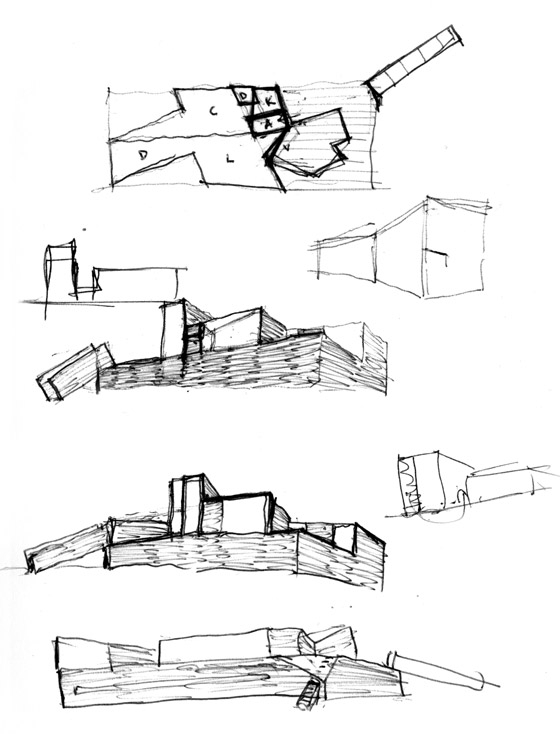When we met the client for the first time, he asked us to do house with the color of the shadow. We thought that was an interesting challenge and we accept to design a private house for a rich client, a program that normally we don’t do because not relevant enough.
We were asked to design a summer/winter house in a remote landscape in the most southern part of Chile. More than a design, the client wanted us to consider all the variables that might be the case for the project and formulate an equation with them; the design then had to be just the resolution of that equation.
A volcanic site, 4000 mm of rain every year, strong winds from the north and the east, views towards the lake (east) and the forest (west), considerations of the difficulty of bringing materials to this remote place, erasure of any a priori architectural language (be it old or contemporary) were the ingredients of this “unknown dish”, that should have the capacity to sound familiar once developed.
Being the weather condition very extreme, we started taking as less risks as possible; we began with the most conventional double sloped roof. Slowly, we moved on, extending one slope or the other until touching the frames on the perimeter, looking for the views, but trying to avoid the winds. The rule for the windows followed the same principle of a surfer entering the sea trying to avoid big waves: either you become shallow or narrow. If the windows were framing a vertical element, like a tree or a path in the forest, then they had to be narrow. If they were framing an horizontal view, like the lake or the volcano, then they had to be flat.
This acceptance-rejection logic of the operations, explains also the geometry of the second floor; the first floor on the contrary, is a dry resistant box, able to deal with earthquakes and with the solitude this type of houses have to deal with, great part of the year.
Stones and wood came from the clearance made in the site for the house. The darkness of the object, the color of the shadow the client wanted, was the way we found, to restitute the original density and virginity of the place.
Architects: Alejandro Aravena, Jorge Christie, Victor Oddó
